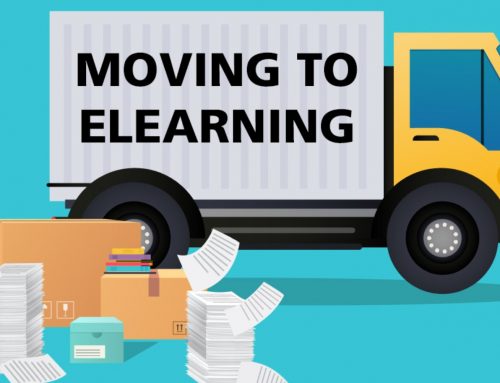You saw this paradigm shift coming – now it’s here! 6 steps to catching up.
In my hands is a tube of Crest and a tube of Colgate toothpaste. Chances are better than 50/50 (Colgate 32 share; Crest 27 share) that you’re using one or the other, but do you know why?
 Toothpaste is a relatively low-involvement decision and you probably made your choice years ago based on criteria like brand recognition, price, taste, efficacy, the fact that your significant other likes the smell of your breath in the morning… it’s a growing reality of the marketplace however, that as products become increasingly similar to one another in features, quality and price (commoditization), the more important it becomes for marketers to differentiate through education. The speed, impact and efficiency with which product knowledge can be delivered to a target audience will increasingly identify leaders and followers.
Toothpaste is a relatively low-involvement decision and you probably made your choice years ago based on criteria like brand recognition, price, taste, efficacy, the fact that your significant other likes the smell of your breath in the morning… it’s a growing reality of the marketplace however, that as products become increasingly similar to one another in features, quality and price (commoditization), the more important it becomes for marketers to differentiate through education. The speed, impact and efficiency with which product knowledge can be delivered to a target audience will increasingly identify leaders and followers.
Here are six suggestions that should help move the process in the right direction:
1. Expand your creative pool – traditional advertising agencies see the train coming (because clients keep asking for more learning-based initiatives) but they’re having a hard time incorporating it into their existing business model. Writing good ad copy and developing creative learning programs require some different skill sets. Don’t be afraid to bring specialists into the mix. Good ones can work independently or seamlessly with your ad agency.
2. Don’t attempt to accomplish everything at once – the great thing about digital learning is that it’s development is generally additive in nature. Develop a solid base and a few core components, then test and grow over time.
3. Demand metrics and accountability – and not just Google analytics. There are many ways to assess program and participant performance and link it to marketing metrics. Information needed to evaluate performance at the back-end must be included in the initial planning process.
4. Use your market – the beauty of the Internet and its billions of users is that there are hundreds of thousands of people (many qualified) that are willing to help develop and evaluate programs for free . . . if you’ll ask. Targeting and tapping into these groups can speed development and conserve spending.
5. Don’t settle – established universities as well as upstart online specialty degree schools, seem to be content with just translating traditional live learning into the electronic medium (pdfs, videos, still images, etc.) and do little to take advantage of the true interactive capabilities of the Internet and the dynamics of the computer as a delivery tool. Consider the computer as the true first “appliance for the brain” and build your strategy around maximizing its effectiveness.
6. The Objectives-Strategies-Tactics approach still works – setting objectives is only possible if results are being measured (see above). Putting the “O” back into “OST” allows this proven approach to be equally effective in developing learning initiatives. There are a lot of very impressive tactical components being developed, make sure they fit with your defined objectives and strategies.
Illumen bottom line – learning should be a significant and growing component of every marketing plan. If it’s not in yours yet, you’ve got some catching up to do! Today’s a good day to start.





